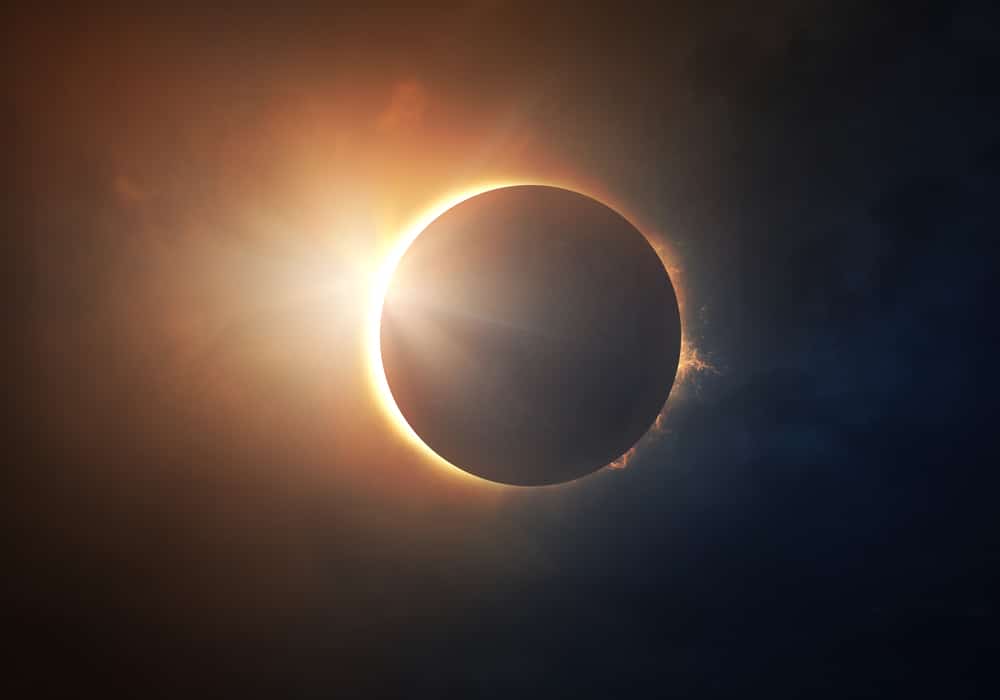One year from now, on Monday, April 8, 2024, the Moon will pass directly between Earth and the Sun, creating a total solar eclipse like the one that crossed the United States from coast to coast on August 21, 2017.
As it did that day, the new Moon will fully block the Sun’s bright face, turning day into night for several minutes and revealing the magnificent solar corona, our star’s wispy outer atmosphere.
Our natural satellite’s dark shadow, about 115 miles wide, will cross Mexico, sweep from Texas to Maine, and then darken parts of Eastern Canada. Outside this narrow path, nearly everyone in North America will get a chance to witness a partial solar eclipse.
Remarkably, we’ll have had another major solar eclipse just six months earlier. But on Saturday, October 14, 2023, when the Moon is centered in front of the Sun, it will cover only 90% of the brilliant solar disk.
The remaining 10% will appear as a blazing “ring of fire” around the Moon’s black silhouette. This annular (Latin for ring-shaped) solar eclipse will be visible within a roughly 125-mile-wide path from Oregon to Texas and on into Mexico, Central America, and northern South America. Again, most North Americans outside the path will experience a partial solar eclipse.
rom beginning to end, a solar eclipse lasts up to about 3 hours. For most of that time, the Moon slowly covers the Sun, then uncovers it; these are the eclipse’s beginning and ending partial phases. The real excitement comes in the middle, but only for those within the narrow path of the Moon’s dark shadow, and only for a few fleeting minutes.
April 8, 2024: The Moon’s shadow will pass over more big cities than in 2017 and give at least 30 million Americans a shot at seeing the solar corona without having to travel. But there’s a catch: In early April much of the country is still in winter’s grip.
Clear skies are most likely across Mexico and Texas Hill Country, and these places also happen to be where totality — the brief total phase of the eclipse — lasts longest, nearly 4½ minutes. Many diehard eclipse enthusiasts have already made plans to visit Mexico or Texas next April.
October 14, 2023: Weather prospects for the annular eclipse look most promising in parts of Utah, New Mexico, and Texas, where the “ring of fire” lasts about 5 minutes. Sky & Telescope offers package tours to the best places to see both eclipses.
During partial and annular solar eclipses, the Sun remains dangerously bright at all times and must never be looked at directly except through special-purpose “eclipse glasses” or handheld viewers that meet the requirements of the ISO 12312-2 international standard. See our safety guidelines for advice on where to get safe solar filters and on indirect viewing methods. During totality, you can safely view the eclipsed Sun without eye protection.
“If you can get yourself into the path of the Moon’s shadow for a total solar eclipse, it’s definitely worth the effort,” says Rick Fienberg, Project Manager of the American Astronomical Society (AAS) Solar Eclipse Task Force and Senior Contributing Editor of Sky & Telescope.
“A 99% partial solar eclipse doesn’t get you 99% of the experience of a total solar eclipse—the last 1% is literally the difference between night and day. As the Moon blots out the thinning arc of the bright Sun in the final minute before totality, daylight fades by up to 1,000 times. And the solar corona surrounding the Moon’s velvety black silhouette is one of the most glorious sights in all of nature!” (READ MORE )










